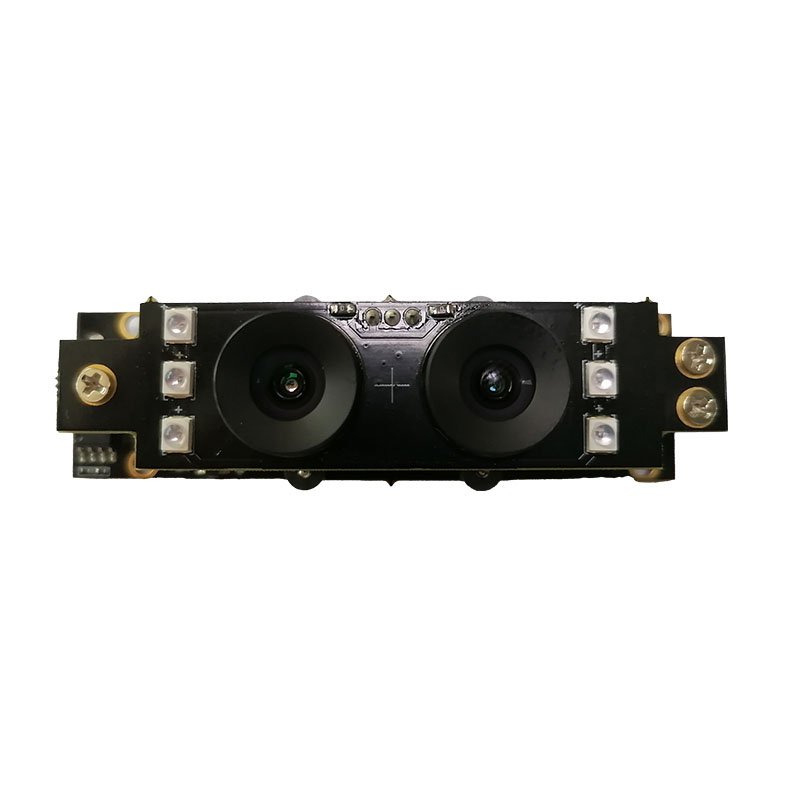A camera with two or more lenses and a separate image sensor or film frame for each lens is called a stereo camera. The advantage of having a stereo camera module with an adjustable baseline is that you may generate more precise disparity maps at various viewing angles and distances. This will significantly increase the precision in 3D reconstruction and other visual odometry applications.
However, what exactly is disparity? When a specific 3D point is projected under perspective to two different cameras, disparity refers to the difference in image pixel placement. Typically, the disparity is expressed in terms of pixel shifts. For example, a real-world scene is projected onto a stereo camera’s left and right cameras.
 Typically, stereo vision with dual lens camera module offers a far superior viewing experience since objects appear so three-dimensional that you almost feel you could reach out and touch them. In addition, if properly developed, your brain receives information close to what it would anticipate, making it more pleasant to see.
Typically, stereo vision with dual lens camera module offers a far superior viewing experience since objects appear so three-dimensional that you almost feel you could reach out and touch them. In addition, if properly developed, your brain receives information close to what it would anticipate, making it more pleasant to see.
- How to select your stereo camera: One of the critical functions of a computer vision system is depth perception. Therefore, your stereo camera’s accuracy is more trustworthy for objects that are relatively close by and less reliable for those that are far away. In such a situation, you can use variables like the baseline, focal length, and resolution to enhance depth range, but you will start losing near depths. So you can further widen the discrepancy levels to make up for that. Remember the issue of accuracy vs. speed arises as the disparity levels rise and stereo correspondence computation costs rise. Keep the above in mind before making a purchase.
- Advantages of Stereo Camera Module: The advantages of the stereo camera module are absolutely significant. For instance, more data is seen by stereo cameras, which results in fewer occlusions. Any occlusion brought on by surface geometry that obstructs projected light or the camera’s field of vision will yield no data with a single camera. Additionally, stereo cameras take advantage of three views of the same object to successfully gather more data: triangulation of the left camera, triangulation of the right camera, and stereo with two cameras functioning in tandem.
Note that the use of stereo cameras reduces occlusions. Occlusions can significantly hamper the measurement of features’ reliability and accuracy. Your data can be wrong if you can’t view a certain amount of the feature. A single acquisition sequence is more likely to yield accurate measurements when stereo designs like dual-lens camera modules are used.
 Since stereo cameras are calibrated between the camera pairs and not concerning the projector, pattern displacement brought on by temperature variations does not lead to inaccurate 3D data. So, stereo technology’s lower occlusion and improved temperature stability result in enhanced data quality and reproducibility.
Since stereo cameras are calibrated between the camera pairs and not concerning the projector, pattern displacement brought on by temperature variations does not lead to inaccurate 3D data. So, stereo technology’s lower occlusion and improved temperature stability result in enhanced data quality and reproducibility.
Conclusively, when the two generated images are seen separately with each eye, the two different lenses and sensors of a stereo camera produce a 3D impression. Are you in search of a stereo camera module? The stereo camera module from cbritech.com has a fast speed and a long service life. Dual lenses can be used with various digital items, including DVD players and other devices. This module simultaneously serves multiple purposes: high performance and numerous applications, and it is suitable for DIY and module installation.
Also, the high-definition video and audio module is appropriate for commercial equipment like live networks and other such devices. Similarly, this dual-lens camera module also supports a variety of video, photo, motion detection, recording, and video playback. For more details, click here now!

